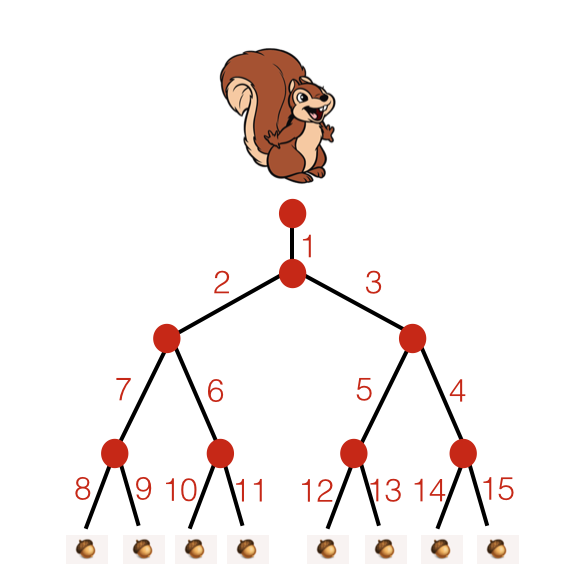Lazy Squirrel Does Math
 Each edge in the binary tree is labelled with its length (not to scale). What is the minimum distance that the lazy squirrel can travel to get 1 acorn?
Each edge in the binary tree is labelled with its length (not to scale). What is the minimum distance that the lazy squirrel can travel to get 1 acorn?
Bonus: Can you generalize/prove this result for larger trees with the same edge-length pattern?
The answer is 18.
This section requires Javascript.
You are seeing this because something didn't load right. We suggest you, (a) try
refreshing the page, (b) enabling javascript if it is disabled on your browser and,
finally, (c)
loading the
non-javascript version of this page
. We're sorry about the hassle.
The lazy squirrel should use uniform cost search . This will let him explore every path that is lazier than the path of the laziest solution until he finds the laziest path to an acorn.